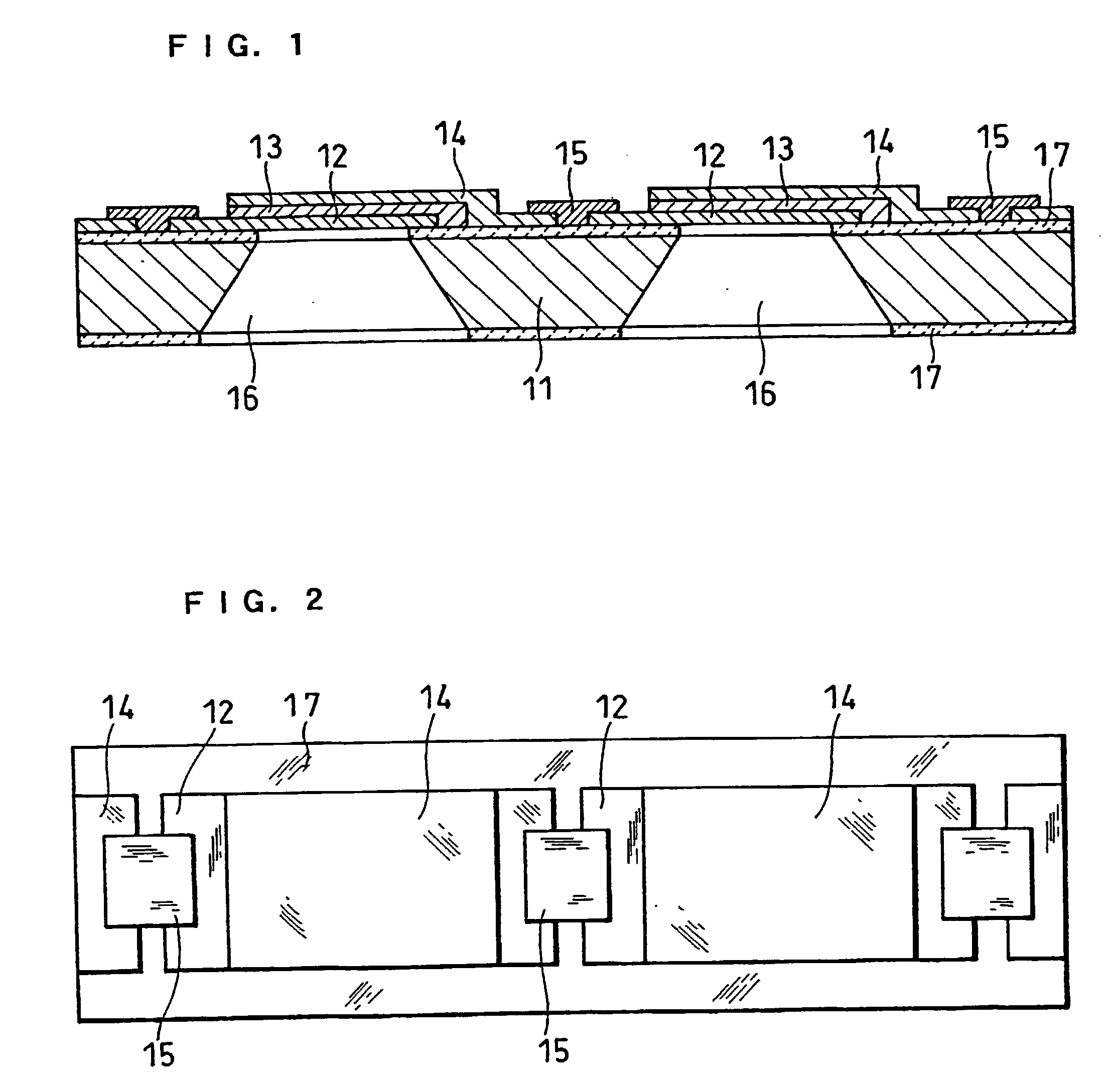High-polymer eletrolyte type thin film fuel cell and its driving method
a fuel cell and high-polymer electrolyte technology, applied in cell components, transportation hydrogen technology, electrochemical generators, etc., can solve the problems of difficult handling of individual unit cells, difficult to supply fuel or oxidant gas to individual unit cells, and inability to easily achieve fuel cell volume capable of being installed in mobile devices. , to achieve the effect of improving the generation efficiency of thin film fuel cells, improving water retention, and improving the outpu
- Summary
- Abstract
- Description
- Claims
- Application Information
AI Technical Summary
Benefits of technology
Problems solved by technology
Method used
Image
Examples
embodiment 1
[0094] While two pieces of the fuel cells described in Embodiment 1 were held at 75.degree. C., a hydrogen gas heated and humidified to have a dew point of 50.degree. C. and air at room temperature were supplied to the anodes and cathodes, respectively, and the cells were continuously operated at a fuel utilization rate of 30%, an air utilization rate of 10% and a current density of 0.1 A / cm.sup.2. One of the fuel cells (Cell A) was continuously operated for 2000 hours. The other fuel cell (Cell B) was operated for 1000 hours, and thereupon, a 0.1 M nitric acid aqueous solution was circulated in the fuel gas flow channel of the fuel cell for one hour with a pump, followed by washing with water. The changes in output of these fuel cells are shown in TABLE 1. The output with respect to the initial output was improved to 70% by the acid solution treatment performed after 1000 hours of operation. This was presumably because impurity ions were removed from the polymer electrolyte membran...
example 2
[0097] Four pieces of the unit cells described in Embodiment 1, having an electrode area of 0.01 cm.sup.2, were connected in series, and four sets of these were connected in parallel to produce cell blocks X and Y.
[0098] A power source unit in which the cell blocks X and Y were simply connected in parallel was operated first. A device having a voltage of 12 V and a power consumption of 6 mW was used as the device to be driven by this power source unit, and a DC-DC converter having an input of 3 V to 7 V and an output of 12 V was used. A humidified hydrogen gas and air were supplied as a fuel and an oxidant gas, respectively, to the power source unit; as a result, an open circuit voltage of 0.91 V was obtained at a cell temperature of 75.degree. C. The device was driven when the power source unit was connected to the device and the DC-DC converter. The output of the fuel cell at this time was 6.4 mW (3.2 V-2.0 mA).
[0099] Meanwhile, the above-described fuel cell was allowed to stand f...
PUM
 Login to View More
Login to View More Abstract
Description
Claims
Application Information
 Login to View More
Login to View More - R&D
- Intellectual Property
- Life Sciences
- Materials
- Tech Scout
- Unparalleled Data Quality
- Higher Quality Content
- 60% Fewer Hallucinations
Browse by: Latest US Patents, China's latest patents, Technical Efficacy Thesaurus, Application Domain, Technology Topic, Popular Technical Reports.
© 2025 PatSnap. All rights reserved.Legal|Privacy policy|Modern Slavery Act Transparency Statement|Sitemap|About US| Contact US: help@patsnap.com



